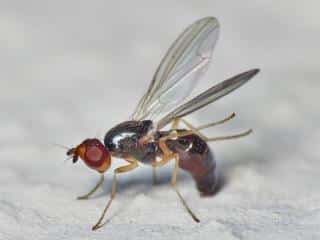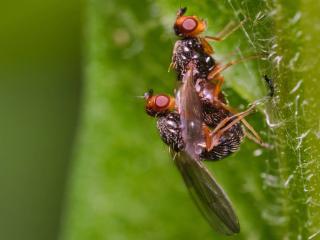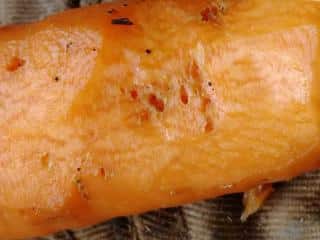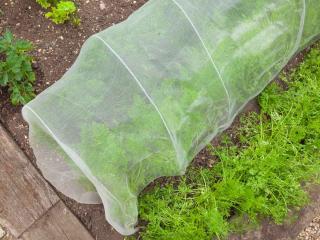

Your carrot plants look sad? The roots are dug up and blackened? It’s probably the carrot fly! Discover how to fight this garden pest.
→ Also read:

Its body is black, its head is brown, its legs are yellow, and its wings are of a pale translucent yellow.
It’s its larva that causes problem in the garden! Measuring up to ~2/5 inch (1cm) long, it is of a cream yellow color. The issue? It particularly appreciates carrot roots…

Every year, two to three generations succeed each other. In winter, the pupae enter diapause underground, meaning they hibernate. The insects will then emerge from the ground the following spring, when the temperatures are more clement.

In case of heavy attack, the plants will perish and the harvest will be compromised. When you pull up your carrots, you will then see the roots dug up and marked by black streaks.
This insect overwinters underground, near carrot plants, so it’s crucial to move the host plant. If you have already suffered an attack from this pest, consider significantly distancing your carrots during the next sowing. Indeed, there may still be pupae underground, even if you think you’ve eradicated all of them.

Some plants have a repelling effect on certain pest insects.
This is the case with Alliums such as onion, leek and garlic, which repel the carrot fly. A service rendered by the latter that keeps away the onion fly. It’s better to plant these two next to each other! You can also set up wormwood nearby, its scent repels the fly.
At the time of sowing, add coffee grounds. The strong smell repels the fly, while being a choice fertilizer!
While we appreciate lavender to the point of making scented sachets, this is not the case with the carrot fly. At the time of transplanting, place lavender mulch at the base of the carrots, the fly will not come to lay there.
Are your carrots already under attack? Consider removing all affected carrots and burning them. Here are two environmentally safe control methods.
The same color as carrots, these strips work as a trap for the flies. Place them at flying height, so they can easily stick to them. This technique is a good supplement to eradicate them. However, it won’t be enough to deal with them on its own, especially if the attack is significant.
Still with the aim of keeping these pests away from the garden, prepare a garlic infusion.
You can keep this decoction cool for 10 days. To use it, just spray it on the affected plants.